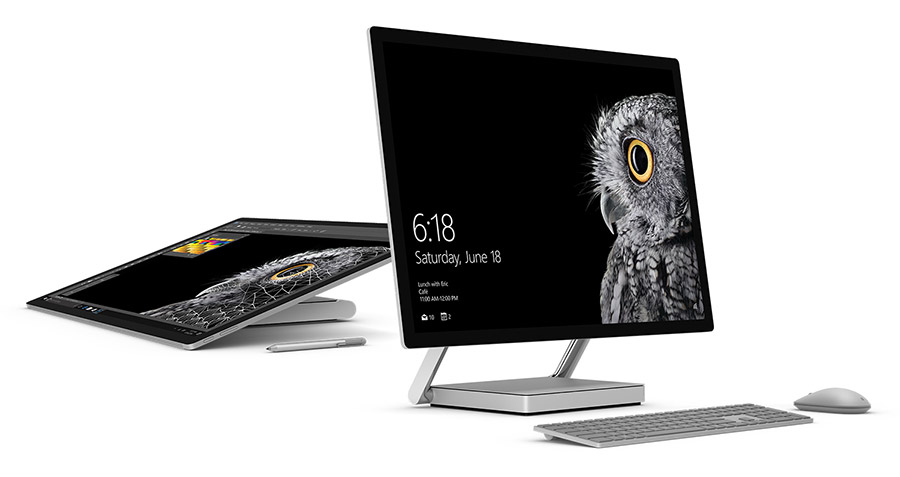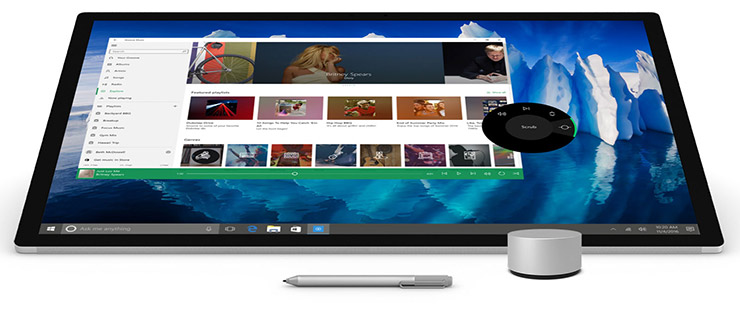
Microsoft today showcased what PCs are going to look like in the future. From the upgraded Surface Book to the new all-in-one Surface Studio, they showed where Windows was going, including new forms of interaction blending the physical and virtual world.
Their Surface Studio is an all-in-one Windows 10 PC which is set to take on Apple's iMac line. The highlight here is the 28-inch PixelSense display which packs 13.5 million pixels inside in a 3:2 aspect ratio with 192 PPI pixel density all inside a 12.5mm thin aluminum casing. Microsoft's Panos Panay also talked about the True Scale capabilities of the Studio by showing a sheet of paper which scales to the same size on the display.

The company also announced a new way to interact with its Surface devices, the Surface Dial, which brings a lot of unique experiences for the Studio. For example, you can bring up a color picker, zoom tools based on the app you are on by placing the Surface Dial on the Studio's display. You can customize shortcuts and menus which open in a radial when the dial is rotated. The Surface Studio starts at $2999 packing a 1TB Rapid HDD, 6th-gen Core i5 and 8GB RAM with 2GB Nvidia 965M GPU and you can go up to $4199 for the top of the line variant, still packing a 6th-gen Core i7 processor, 32GB RAM and 2-year-old 4GB Nvidia 980M GPU.
No Kaby Lake. Nvidia 980M in 2016, seriously? For $4200?
Now, here's what I was talking about with the title of this post. Microsoft is using year old 6th-Gen Intel Core internals on their brand new Studio and 2-year-old Nvidia 980M graphics. Launching a product which is to set the benchmark for all such devices to come, with older hardware, just doesn't make sense, especially when Intel's Kaby Lake and Nvidia's GTX 10-series graphics have already proven their efficiency and performance.
I can understand that the Surface Studio may have been in development for quite some time, not giving enough time to test out new hardware but even the new Surface Book i7 also runs on a 6th-gen processor instead of the current 7th-gen Core i7. With all these new forms of interaction being developed for creators, Microsoft is forgetting that 3D art, video production, and rendering needs a lot of horsepower under the hood. Pushing so many pixels with Photoshop, Premiere, After Effects or similar editing software will bring the Studio to its knees with such dated specs. I could be wrong, but given that you already have updated hardware available in the market, charging north of $4000 for older just doesn't seem right.








